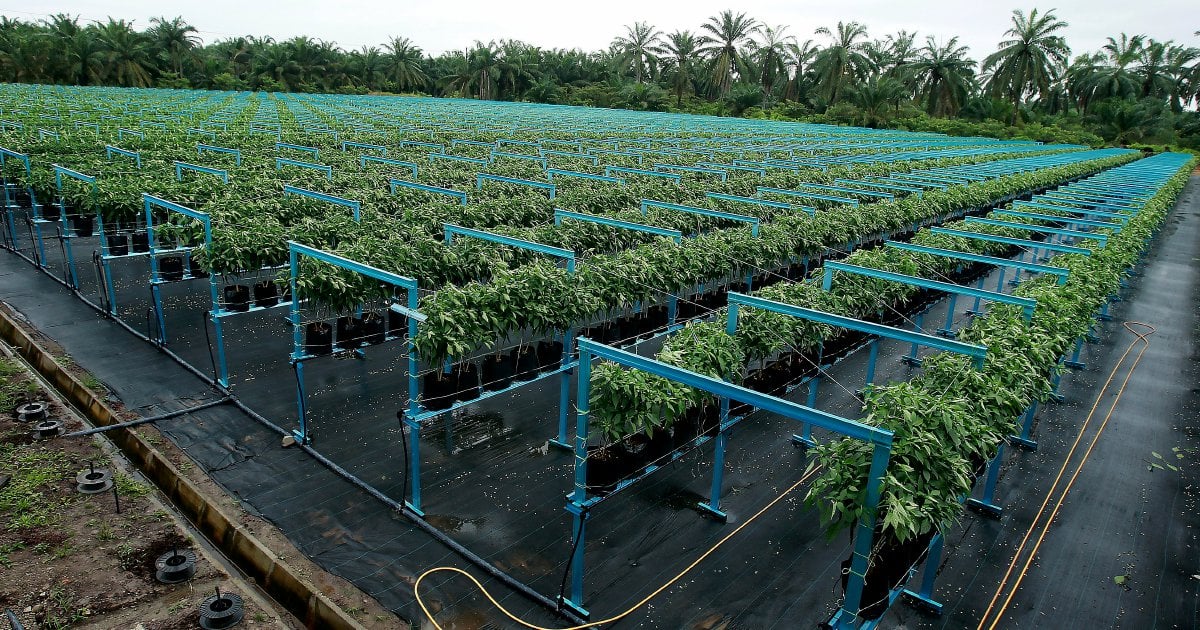THE 13th Malaysia Plan (13MP) has big ideas for the agrofood sector. High time, we say. It has been treated as a stepchild since the country transitioned to manufacturing in the 1980s.
That should change by 2030, when the 13MP reforms the sector, leading to RM58 billion in value creation. Self-sufficiency rates are also being scaled up to 80 per cent for rice, 98 per cent for fisheries, 83 per cent for fruits, 79 per cent for vegetables, 140 per cent for poultry, 123 per cent for eggs and 50 per cent for beef and buffalo meat.
Ambitious? Yes, given that the Agriculture and Food Security Ministry has to hit the targets within five years, on top of resolving numerous issues plaguing the agrofood sector. Surely, an unenviable task.
Land is a big ticket item, with most of what is available being devoted to industrial crops such as oil palm and rubber, because they are more profitable. In 2020, 7.6 million hectares of arable land was used for agriculture, of which 5.2 million was dedicated to industrial crops.
Little wonder, our Asean neighbours’ agrofood products are everywhere. Former director of Malaysian Agricultural Research and Development Institute, Rozhan Abu Dardak, provides another reason why this is so in his article published in the Food and Fertilizer Technology Centre Agricultural Policy Platform website on April 14: Vietnam dedicated 33 million hectares for rice cultivation.
Thailand 9.2 million hectares, Indonesia 10.6 million hectares and the Philippines 5.6 million hectares. What about Malaysia? Of the 996,950ha dedicated to the agrofood sector, only 373,383ha is being used to cultivate rice.
The rest is used for growing fruits, other food crops and vegetables, the last, a measly 64,220ha to work on. If that is not enough, the agrofood sector has to compete with industries and housing for land. More land for agrofood should certainly be a reform to aim for.
There is one reality our policymakers often miss. Malaysia is a land of small things. Like the small and medium enterprises (SMEs) that dominate the country’s economy, so do small-scale farms.
According to Rozhan, more than 90 per cent of Malaysian farmers own small plots of land, averaging 2.5ha per person. Logically, bigger means better yields. But that doesn’t mean technology can’t be made to work on small plots to increase yields.
Like we have learnt to live with SMEs, we must learn to live with small-scale farms. What the agrofood sector reform should focus on are the farms themselves: the what and how of the trade. The skyrocketing prices of farm inputs, too, are making farming a challenging vocation.
Farmers need help.
Providing subsidies to those who deserve it is one way. The 13MP’s move to incentivise young agroentrepreneurs takes the reform to a good place. We are a nation of old farmers, most of whom are in their 60s.
At that age, farming is a struggle. Malaysians will be keeping a keen eye on the agrofood sector reforms, because what happens in the farms will determine whether or not we have home-grown food on the table.
© New Straits Times Press (M) Bhd






